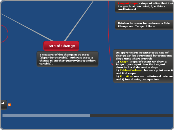par Lina Fahimah Ali Il y a 13 années
701
Rate of Change
The relationship between instantaneous and average rates of change is fundamental in calculus. The average rate of change is calculated as the slope of the secant line connecting two points on a graph, which represents the change in the dependent variable relative to the independent variable over a given interval.









